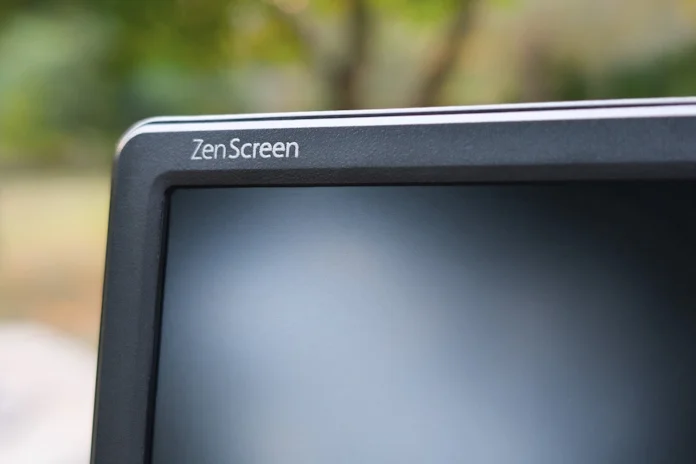For a long time, plenty of PC users have paired their laptop computers with a portable monitor. But the past few years have seen an explosion in the popularity of mobile displays, with dramatic increases in both the number of users and the range of options available. And some researchers predict the market will grow almost tenfold in the next decade. As the supply of portable monitors continues to climb, prices have started coming down. High-quality mobile displays are reaching price points that used to be associated with budget models.
In light of these developments, there has never been a better time to purchase a portable monitor. If you’re considering taking the plunge into portable displays, you might have a few questions. This FAQ will help you understand what kind of mobile monitor is best suited to your needs and budget.
What are portable monitors?
Every desktop computer requires a monitor for viewing program windows and applications. Portable monitors are computer displays designed to be packed up quickly and transported with minimal effort. These monitors are known for letting users of laptop computers add a second display to their workflow without overloading their carry bags. The most popular portable monitors are slim and light enough to slide easily into a shoulder bag or backpack.
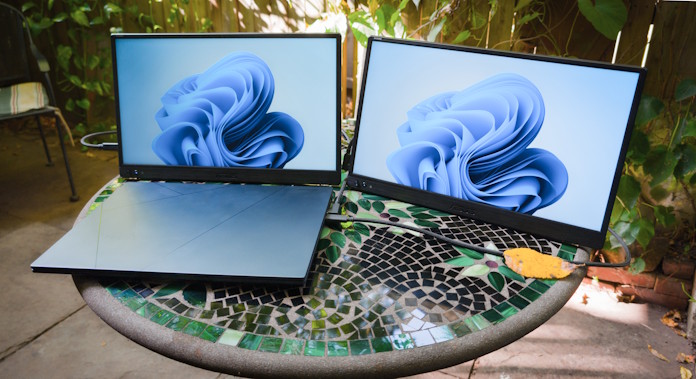
For fans of portable monitors, it becomes second nature to arrive at a temporary workspace, boot up their laptop, set their portable monitor on its kickstand, and plug in a single cable. This moment of additional work pays off by doubling their available onscreen real estate. Often, users don’t even worry about plugging a portable monitor into a power source. Models like the ASUS ZenScreen MB169CK connect to their laptop via USB Type-C, which feeds both the display signal and power to the monitor.
Besides laptops, many portable monitors can also connect to a smartphone or gaming console. That makes portable monitors potentially helpful for showing off photos and editing videos on the go, or conveniently booting up your favorite game whenever you get a few minutes of downtime.
How big do portable monitors get?
Today’s portable monitors come in a wide range of sizes, from slim and trim 13-inch units to surprisingly big models that might rival the size of your desktop monitor. One note on naming: since a 32-inch monitor simply can’t be portable in the same way that a 14-inch monitor can be, even if the bigger screen has a thin design and a carrying handle, we tend to use the phrase “movable monitors” for larger-sized portable monitors to distinguish them from their smaller cousins.
At the smaller end, standard portable monitors measure 14 inches (13.3 inches viewable), 16 inches (15.6 viewable), and 18 inches (17.3 viewable). The most popular size is 16 inches, like our ASUS ZenScreen MB169CK. The half-inch width and low weight of these monitors make them perfect traveling companions for the majority of laptop computers.
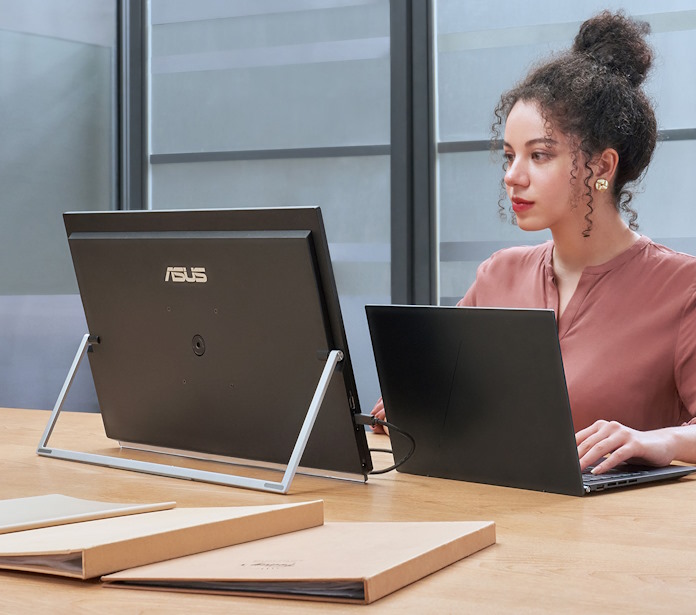
In the medium-sized range, you find 22-inch (21.5 viewable) and 24-inch (23.8 viewable) displays. These monitors offer more onscreen real estate for people who run multiple windows at the same time or want a mobile entertainment center for streaming video content.
Larger movable monitors can make handy viewscreens for presentations to small- or medium-sized audiences. This usage might be driving a trend in recent years for mobile displays to grow bigger. At the upper limits, you find models sized 27 inches (with a viewable area of 311 square inches) and even 31.5 inches (about 424 square viewable inches). The most common size in this range is 27 inches, with numerous models available on the market.
In what ways can a portable monitor boost productivity?
For most PC users, adding a new monitor is an easy way to boost productivity while expanding your options for delivering small-group presentations, enjoying video entertainment, or touching up photos. Most people who get used to a multi-monitor setup eventually discover that they can’t make do with a single screen like the one provided by their laptop. They’ll catch themselves habitually glancing off to the side where they expect to find another screen, or they’ll keep trying to drag a program window to another desktop when multitasking. That makes portable monitors the perfect choice for every worker looking to boost their productivity whenever they’re away from their desk.
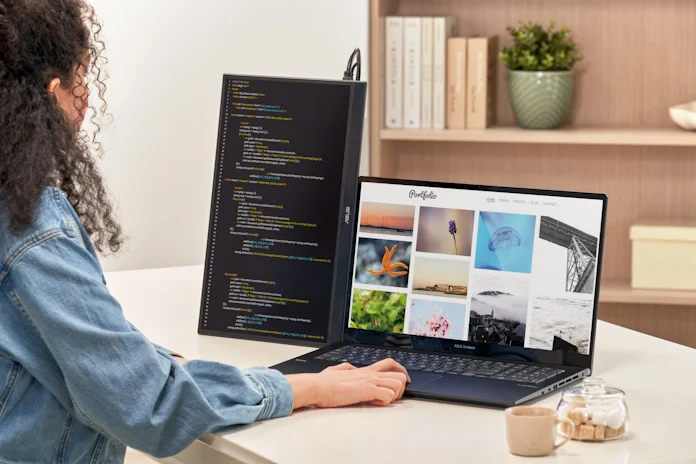
In particular, remote and WFH (work from home) workers appreciate portable monitors for the productivity and flexibility they add to workspaces that are often cramped. The compact footprint of a portable display makes it perfect for small desks. And thanks to the quick setup and pack-down afforded by portable monitors, digital nomads can enjoy the benefits of multi-monitor setups at every coffee shop, hotel, or WiFi hotspot they visit. Many portable monitors also come with built-in webcams, mics, and speakers for work-related video calls, which helps digital nomads conveniently keep in touch with the home office.
Portable displays are also designed to be useful in a multitude of different environments. Mobile displays that feature a high brightness setting are convenient for outdoor use. Traveling execs and workers can open up a new world of possibilities by setting up workspaces that give them a beautiful view and plenty of fresh air.
Whenever business travelers find themselves stuck in an airplane, a battery-powered or low-power e-paper/e-ink monitor can boost their productivity by letting them catch up on reading without straining their eyes. For added convenience, these monitors can connect to your smartphone, letting you leave the laptop in your carryon bag.
Can you use a portable monitor for presentations?
Portable and movable monitors are also great for anyone who makes their living with digital presentations. These displays give users complete control over the presentation environment, so they know what to expect whenever they arrive in a new conference room.
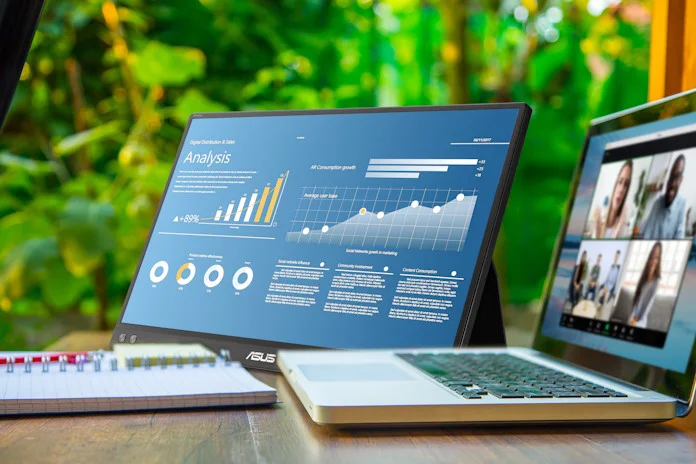
Some specialized creators, like video editors and graphic designers, prioritize having a high-quality display to show off their work with the greatest advantage. Such professionals create their projects on displays with accurate color-matching, high pixel density, and wide-gamut sRGB color spectrum coverage. But they can’t always depend on their clients to review their work on a display matching these standards. Such creators can add a larger-sized, high-quality movable monitor to their suitcase to guarantee their projects are presented accurately.
What are some other ways that people use portable monitors?
Portable monitors are extremely flexible. Their versatile inputs let them accept a display signal from a wide range of devices, and their compact form factor allows for them to be used even in contexts where a standard monitor won’t fit. For these reasons, people often get quite creative with how they use their portable monitor:
- As a display for ultracompact computers including mini-PCs, ASUS NUCs, single-board computers, and more
- As a gaming monitor for on-the-go devices like the ROG Xbox Ally X, a gaming laptop, or a Nintendo Switch 2
- As an external camera screen for DLSR, DVR, or NVR cameras
- As an input device with a visual interface (using a portable monitor with a touchscreen)
- As a monitor for streaming with Chromecast, Amazon Fire TV, Apple TV, Roku Streaming Stick, and more
- As a reference monitor in a production studio
- … and much more.
Additionally, some portable monitors feature built-in mounting mechanisms that allow them to be installed in creative places. A portable monitor with a tripod socket, for example, can be quickly mounted to a stand to be used as a desktop monitor — or, if your monitor has a tripod socket atop its stand, you can go vertical with your multi-monitor setup.
How does the image quality of portable monitors compare to standard displays?
In general, portable monitors offer an experience that’s comparable to what you get from laptop or desktop displays. You have plenty of options, too, so you can count on being able to get a portable monitor with the image quality, pixel density, color gamut coverage, and accuracy that you need.
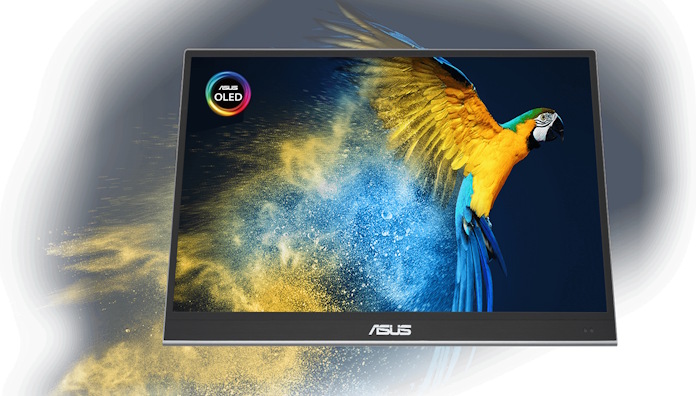
There’s a portable monitor suitable for practically any budget. For example, our ASUS ZenScreen MB169CK offers an anti-glare screen with in-plane switching (IPS) technology for around $100 (USD). The IPS tech is known for superior color accuracy and wide viewing angles, which provide consistent and vibrant colors even when viewed from the side. The flicker-free and Low Blue Light technologies also ensure a comfortable viewing experience that minimizes eye strain.
When it comes to visual clarity and easy readability, nothing makes a bigger impact than high color contrast. At higher price points, you can find models equipped with premium OLED panels. Since each pixel in this display type is its own light source, these panels achieve incredible contrast, as pixels can turn off entirely to create a true, inky black. Portable monitors with a VESA DisplayHDR True Black certification offer immersive HDR entertainment experiences. Additionally, the improved contrast and text clarity afforded by OLED displays make them ideal for long reading sessions.
When the time comes for color, plenty of portable displays at this price point provide 98% to 100% DCI-P3 wide-gamut coverage. This color quality meets the cinema industry’s standard for coverage and matches the quality of any high-end consumer display. These mobile displays give you all the subtle color variations you need to immerse yourself more fully into images, videos, and game environments.
The largest movable monitors, which come in 27” or 32” sizes, boost the quality of not only your images but also your sound. These displays come in either 1440p (QHD) or 4K (UHD) resolutions, matching the detail of higher-end displays and televisions. And many units include high-end speakers and subwoofers for total sonic immersion, all without needing to pack along a separate set of speakers.
Can portable monitors stand up to the wear and tear of constant travel?
When you invest in a new piece of high-quality tech intended for travel, it’s reasonable to worry about the inevitable scuffs and scrapes. Too often, budget portable monitors will leave you on your own to protect your investment with a case that you need to purchase separately. A quality portable monitor, on the other hand, offers protection against normal wear and tear through either a carrying sleeve or a foldable case that covers the screen and cushions the panel. These protective cases are designed to quickly fold and unfold over the unit for easy setup and pack-down. Most of the time, the case folds into a kickstand that supports the monitor while it’s in use, either in landscape or portrait orientation. Of course, every mobile display will include some handy way to keep the monitor upright on your desktop.
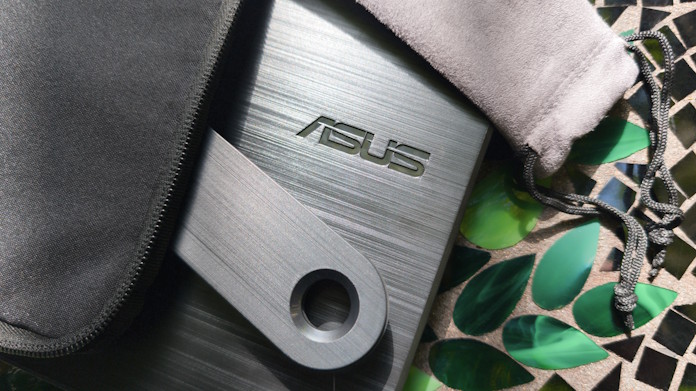
For added protection, look for a model built with a durable panel designed to resist scratches. And a host of ergonomic design features help to minimize the potential for accidents. Larger-sized movable monitors usually feature a convenient foldout handle for carrying. And most larger portable monitors are equipped with a standard tripod hole. This feature lets you lift the monitor off the desktop and mount it to a tripod, creating a stable, viewer-friendly, multi-monitor setup that is perfect for longer-stay scenarios.
For effortless setup, you can also find portable monitors that automatically detect when they’re in portrait or landscape mode and adjust the image orientation on the fly. You won’t need to fuss with buttons or OSDs when you switch from reading spreadsheets and presentations to perusing books or websites.
Do portable monitors come with premium features like touchscreens?
Touchscreens are a common feature of portable monitors, but they aren’t universal. Numerous models provide touchscreen functionality via your fingertips, a stylus, or both. Be sure to read the description and technical specifications of the portable monitor you are considering to find out whether it has a touchscreen. In many cases, a touchscreen mobile display will come with a higher price tag and more premium features, like an OLED panel.
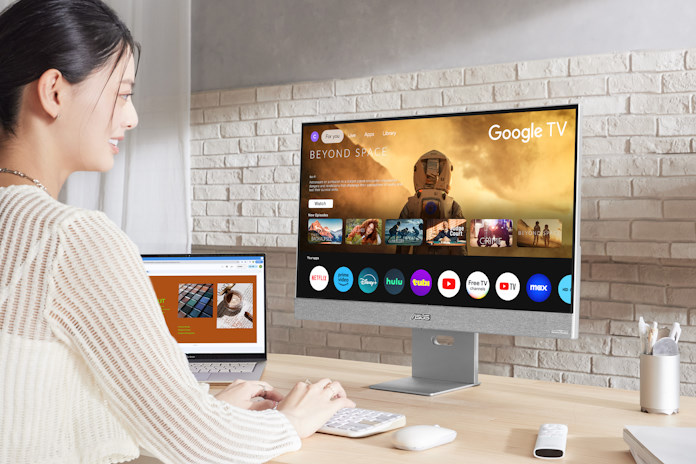
Large movable monitors can also include smart features and WiFi connectivity. For example, the ZenScreen Smart MS32UC movable monitor comes with Google TV, which provides multi-platform streaming and web browsing via Chrome. With an additional keyboard and mouse, this 31.5” UHD monitor can function as a barebones, cloud-based desktop PC all by itself.
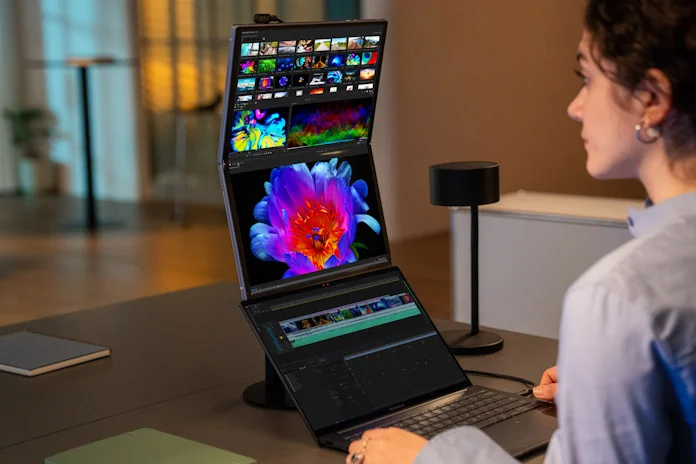
At higher price points, some portable monitors combine maximum quality with effortless transportability. One example is the ASUS ZenScreen Fold OLED MQ17QH. This 17.3” mobile display features a waterdrop-style hinge design that provides a seamless screen and ample workspace. When it’s time to travel, it folds down to a 12.5-inch footprint and weighs just 2.5 pounds.
Whether you’re looking to go budget-friendly or premium, multi-featured or standard, there is a portable monitor available on today’s market that can boost your productivity without overburdening your carry bag. Users typically report that once they get used to a mobile multi-monitor setup, they can’t live without it. With high-quality options available for a hundred dollars or less, it’s never been easier to discover what they mean.

